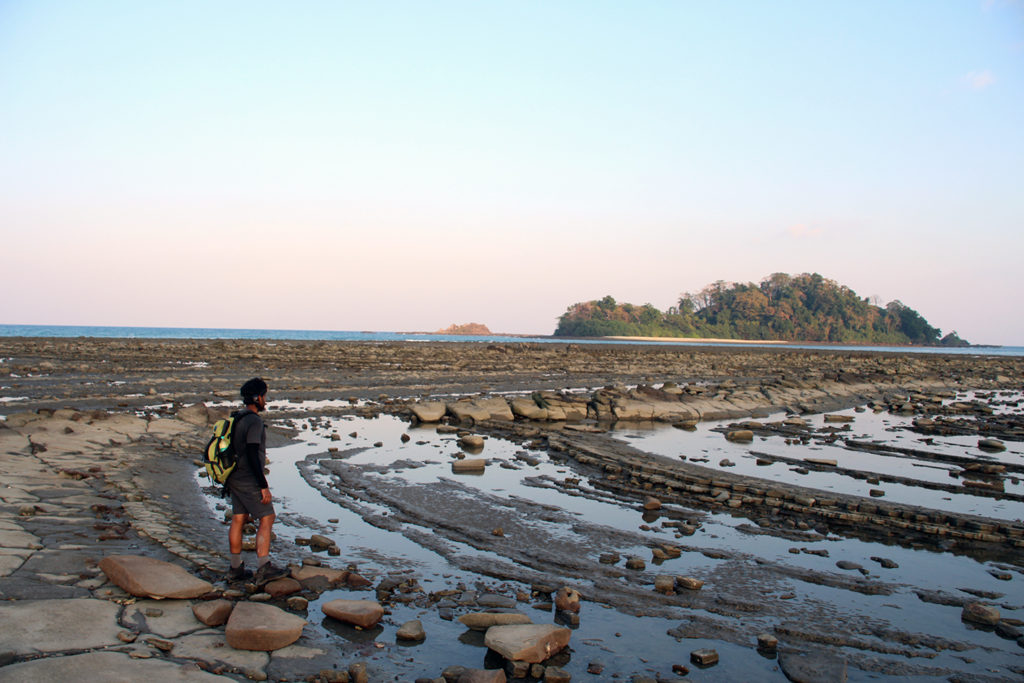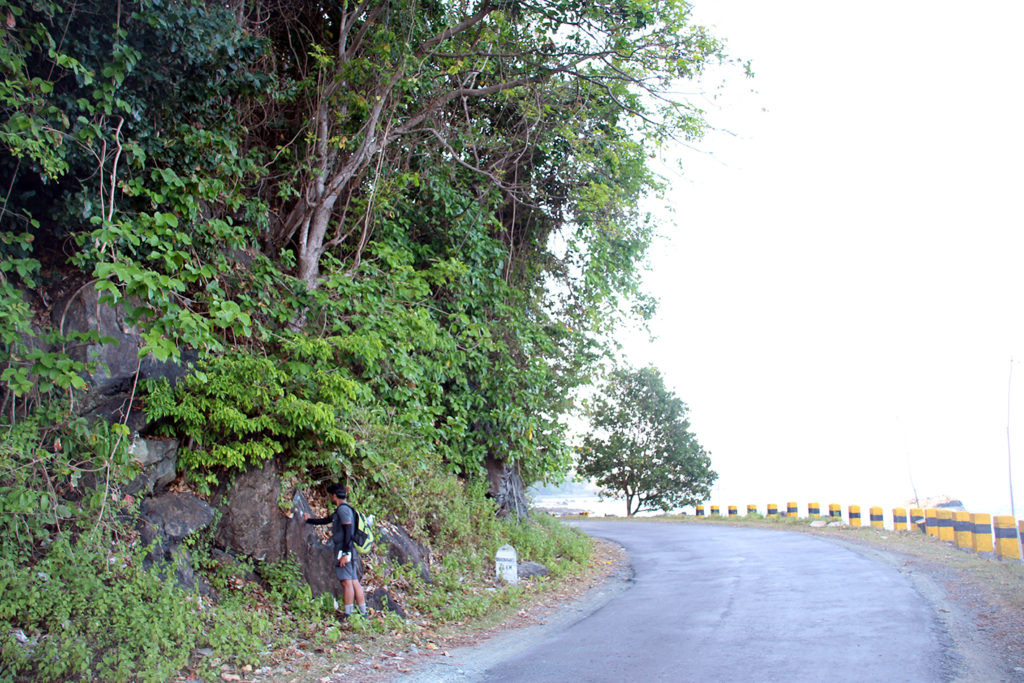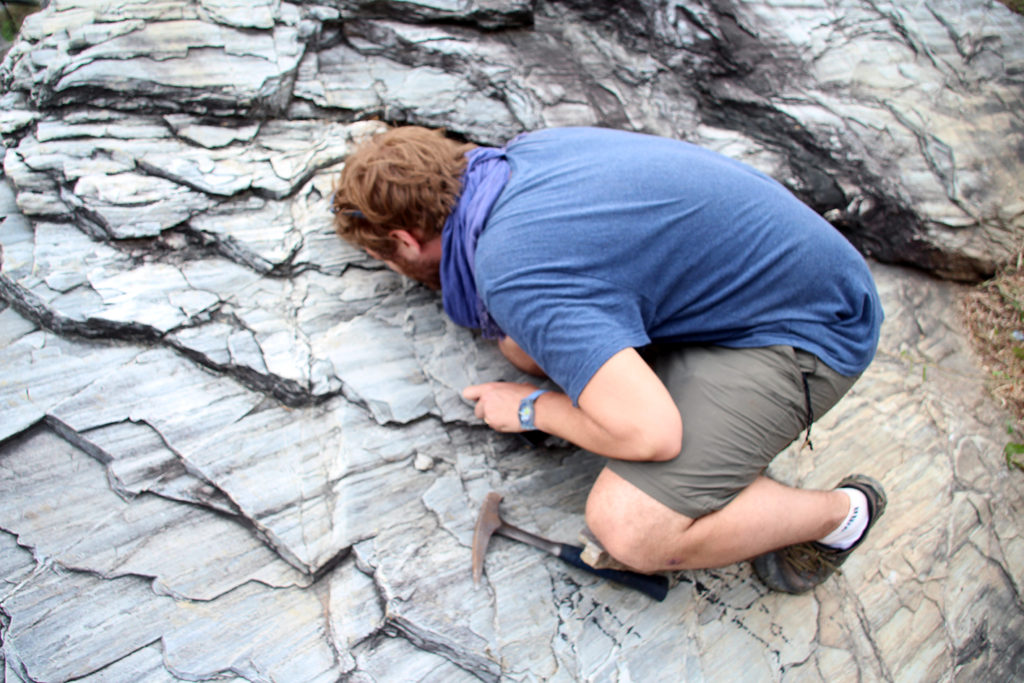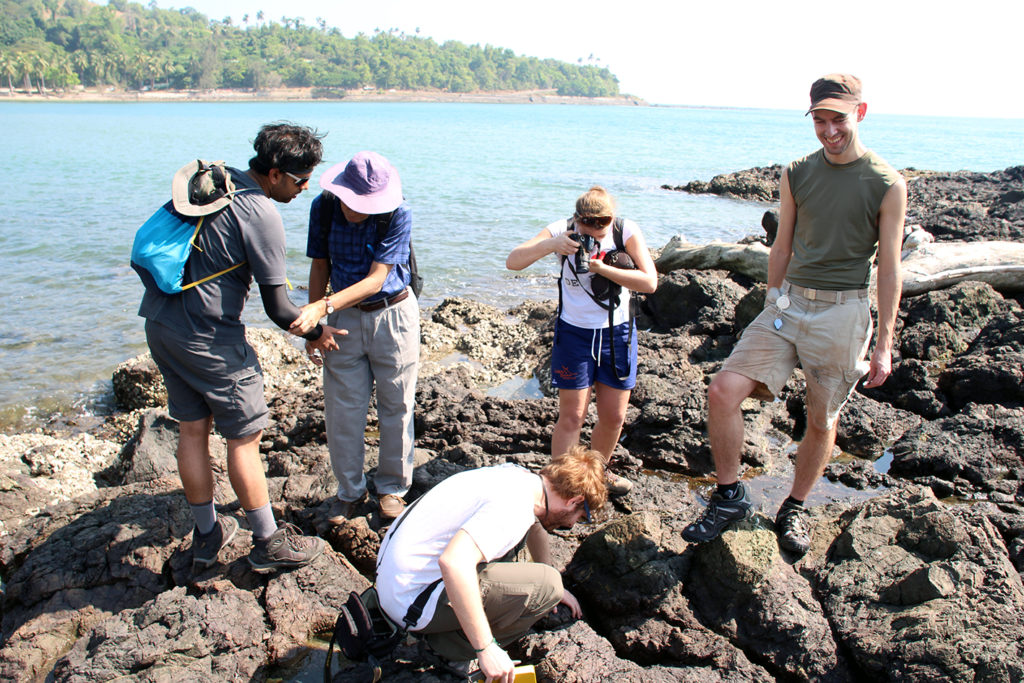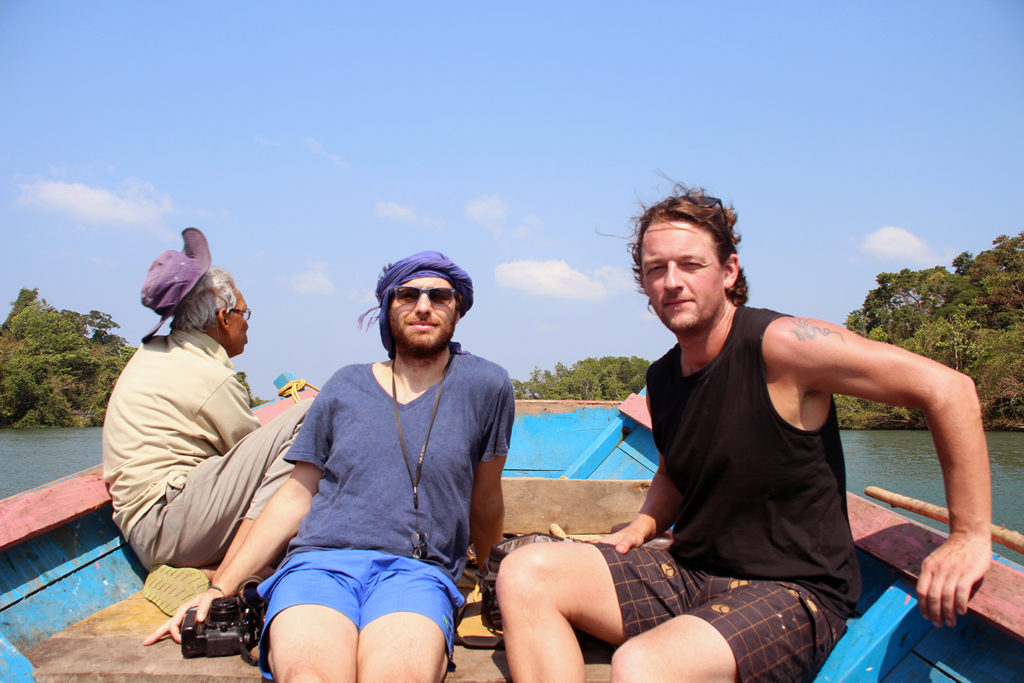Douwe van Hinsbergen is Professor of Global Tectonics and Paleogeography at Utrecht University. He led teams that focused on tectonic reconstructions of the Tethyan and Panthalassa realms from reconstructing orogens, studies subduction initation, mantle structure and evolution, to unravel the drivers of plate tectonics. He is an avid field geologist focused on structure, stratigraphy, paleomagnetism, and everything else that is useful to unearth now-subducted lithosphere.
In 2017, my team from Utrecht University (the Netherlands) joined forces with friends from the University of Calcutta (India) and conducted a field study on the Andaman Islands, an archipelago in the NE Indian Ocean. The aim of the study was to constrain the timing of subduction initiation recorded in Cretaceous ophiolitic rocks exposed on the islands, and the subsequent paleogeographic evolution using Andaman’s sedimentary record.
Normally, these posts on Traveling Geologist report about fieldworks that were done a few months prior, but in this case, the laboratory analyses have been conducted and several publications have appeared based on results from this amazing field trip. In the picture report below, I will try to explain what the rationale of the fieldwork was, what results we obtained, and briefly how our thinking developed and what came of this project.
The Andaman and Nicobar Islands are an archipelago in the NE Indian Ocean, between Myanmar and Sumatra, a Union Territory of India. The islands lie in the forearc of the western Sunda subduction zone and expose Cretaceous ophiolites and arc rocks, overlying deep and shallow marine sediments with ages of upper Cretaceous to Miocene, and underlying accreted mélange and an accretionary prism made from deep-marine turbidite sequences.
The Andaman Islands and are separated from mainland Thailand by the Andaman Sea. The Andaman Sea is a young, partly oceanic basin that opened due to mostly Neogene N-S (trench-parallel) extension that brought the Andaman Islands northward from their pre-Neogene position that, by restoring the Andaman Sea extension, was likely adjacent to NW Sulawesi.
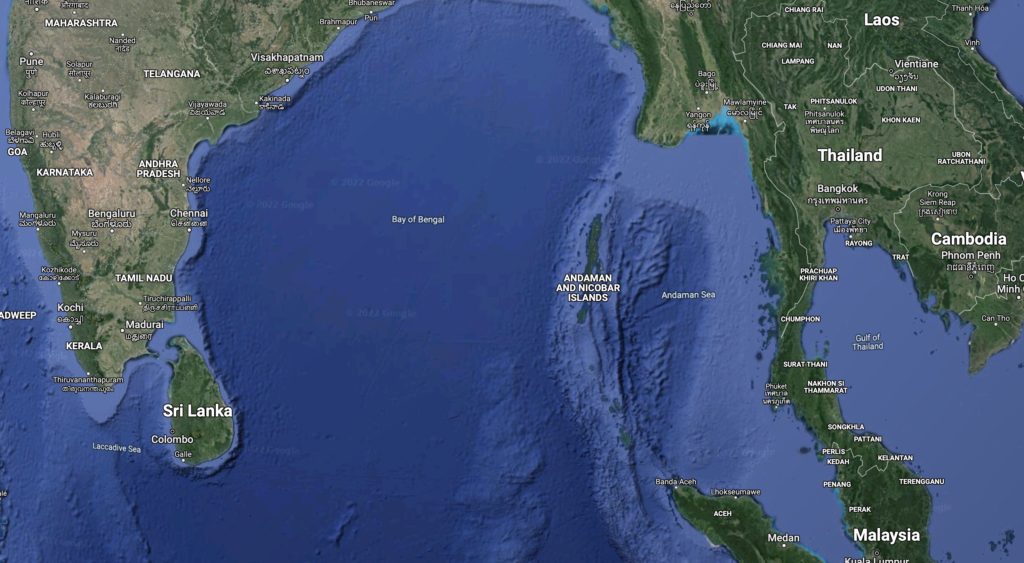
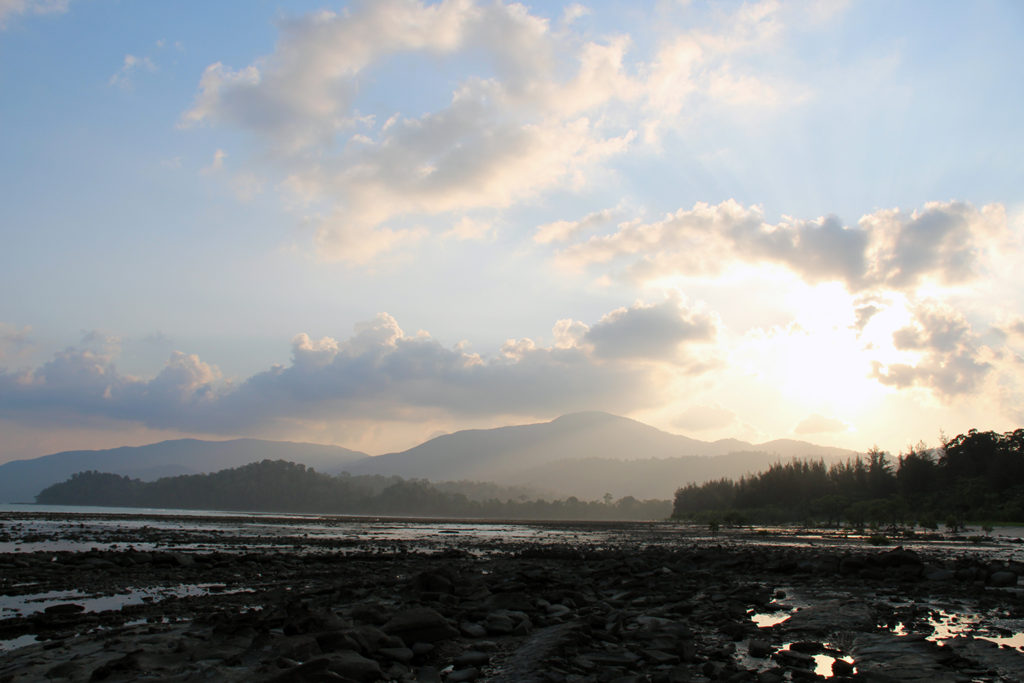
The aim of our analysis was four-fold: (1) we wanted to corroborate the existence of a metamorphic sole below the Andaman Ophiolites, as previously reported but not studied in detail (there is: see Plunder et al., 2020), to sample the various magmatic suites of the ophiolites for a geochemical and geochronological analysis (see Bandyopadhyay et al., 2020 and Bandyopadhyay et al., 2021), to sample the various sandstone formations from the Paleocene and Oligo-Miocene for sediment provenance analysis (Bandopadhyay et al., 2021, accepted for publication in Gondwana Research), and to perform a paleomagnetic sampling to reconstruct the paleolatitude history of the Andaman Islands. The paleomagnetic results will be submitted sometime in the future but the main target – the Cretaceous ophiolite rocks – were remagnetized and unfortunately provided no meaningful result. The remaining rocks provided latitudes that are as expected from tectonic reconstructions, and with rotations that are strongly influenced by folding around plunging fold axes. This does not solve major problems, but we’ll share the data when we find some time to write it down.
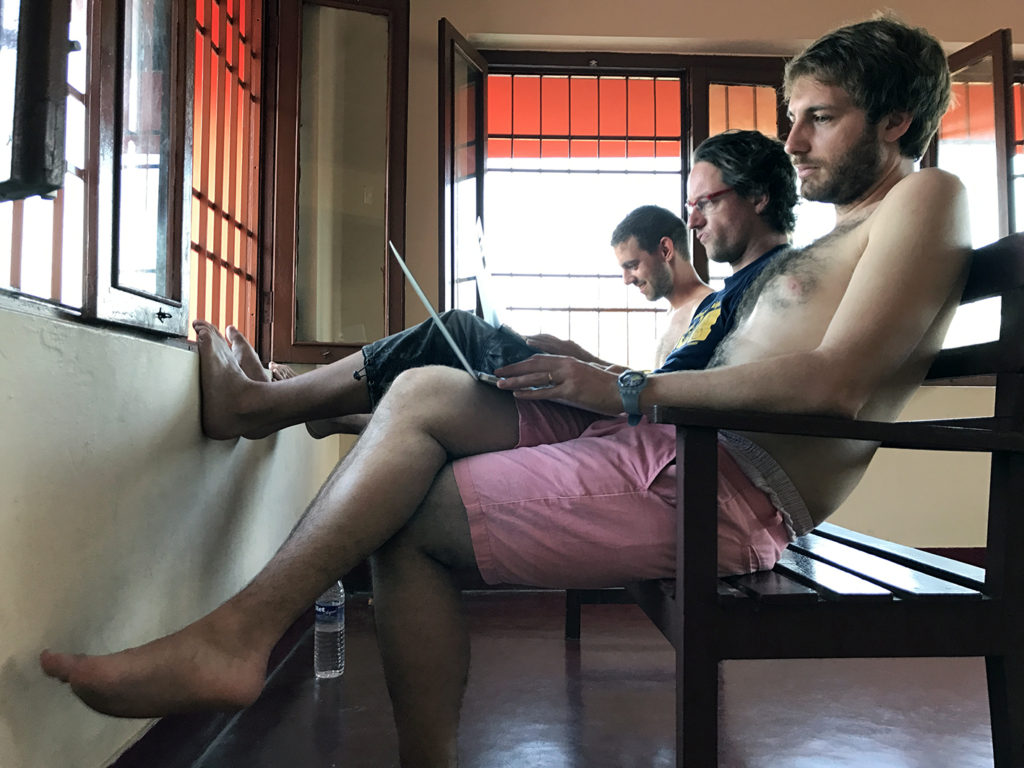
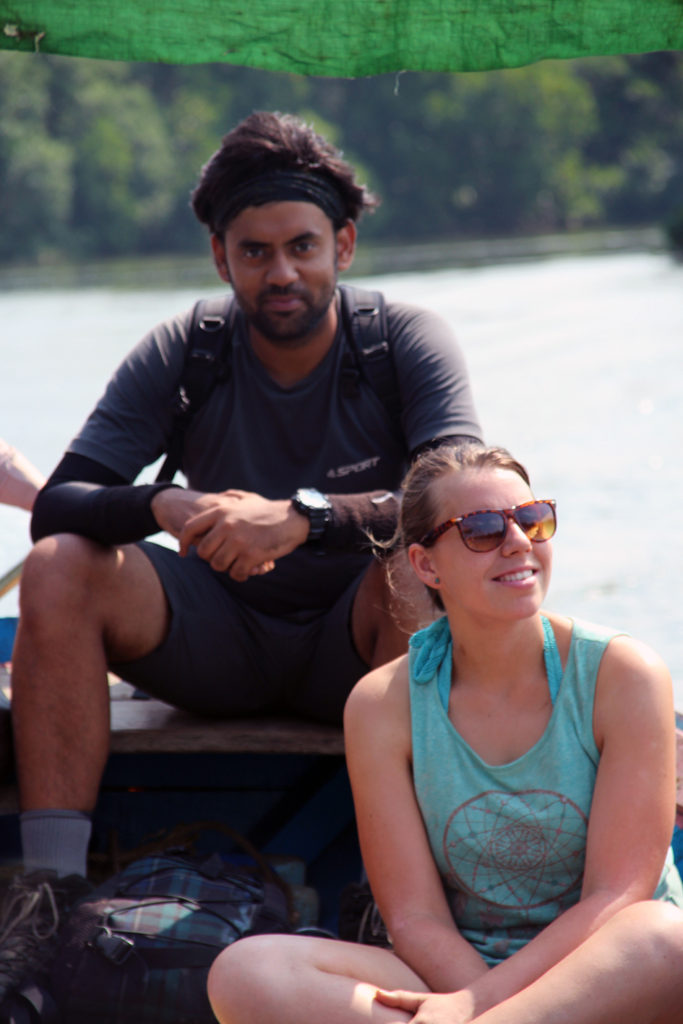
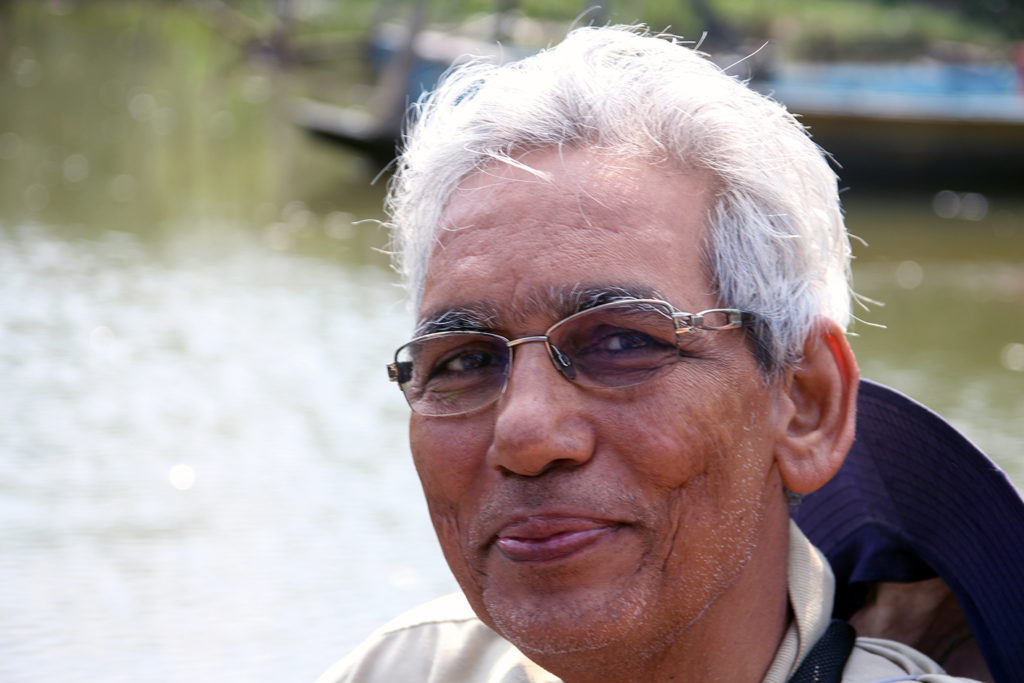
The geology of the Andaman Islands consists of Cretaceous ophiolites, Cretaceous and Paleogene hemipelagic and pelagic sediments (red clay, chert), and Paleocene and Neogene shallow- and deepmarine (volcani-)clastic sequences that are interpreted to have formed in the forearc of a subduction system, probably the same one as is active today, the Sunda subduction zone. The aim of our field expedition was to collect information on the Cretaceous initiation of subduction, the early evolution of magmatism, and the subsequent paleogeographic evolution of the eastern Neotethys from sedimentological and sediment provenance information. The forearc sequences elsewhere along the subduction zone are not exposed, so the Andaman geology provides important constraints on the evolution of subduction and paleogeography of the Australia-Eurasia and India-Australia plate boundaries. The geological map of the islands shows the interpreted distribution of these rock units (the magmatic rocks are included in the ophiolite sequences)…but it is important to realize what the field actually looks like when interpreting these maps. Outcrop is mostly restricted to the coast. At low tide. The rest of the islands is mostly covered by thick jungle.
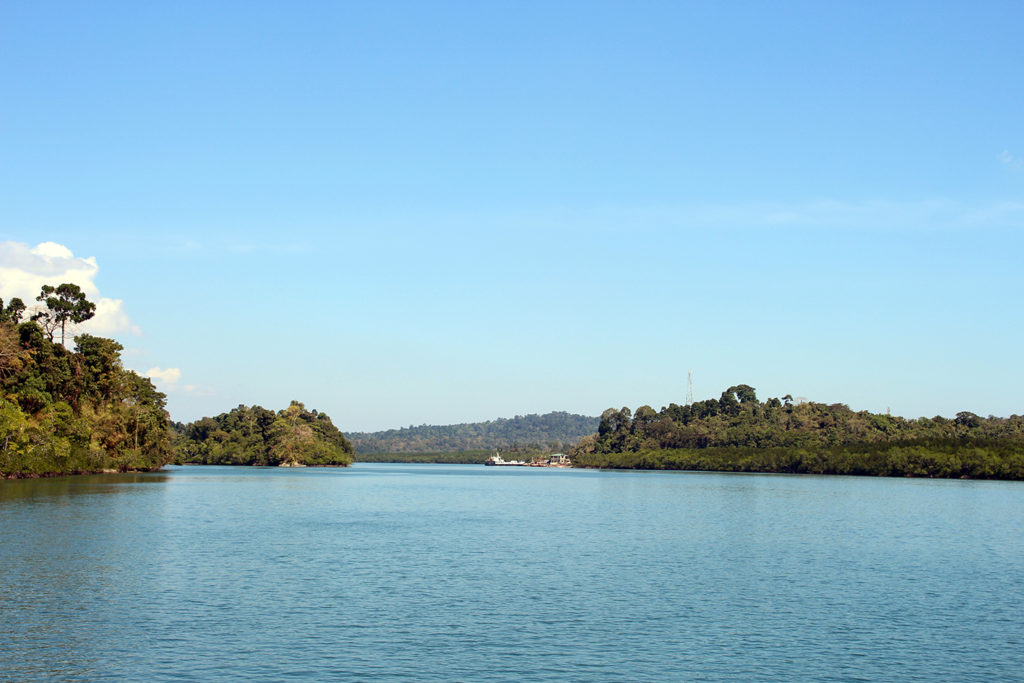
But even though the islands may be poorly exposed in general, the beach exposures are quite excellent. One key target of our trip were metamorphic rocks – amphibolites and greenschists – that had been described before and that are found in bolders on the beach adjacent to the ophiolites. We expected that these rocks may belong to a metamorphic sole sequence that is often found below ophiolites, and that is widely interpreted to form shortly after initiation of subduction. We not only found these rocks in large bolders on the beach, but in one location we found them in contact with overlying peridotites (mantle rocks) of the ophiolites, which confirms this interpretation. We collected samples for petrology, metamorphic conditions, and age dating, which revealed conditions typical for metamorphic soles and reproducible Ar/Ar cooling ages of 105 Ma (see Alexis’ publication in Tectonics), which is ~10 million years older than previously estimated based on the magmatic record – a surprising finding, but of similar age of inherited zircons that we found in gabbros of the ophiolite, see below.
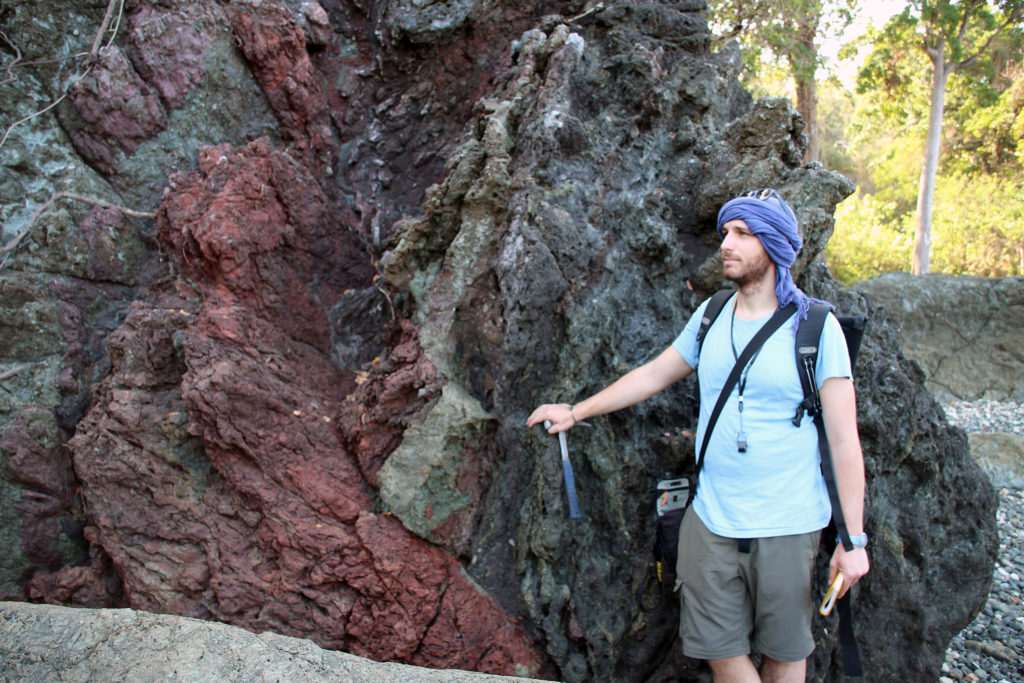
Previous geochronological work on the Andaman ophiolites had shown that they contain magmatic rocks that formed above a subduction zone. These contain plagiogranites that can form at mid-ocean ridges and are therefore often associated with the spreading of ophiolites. But in a large set of samples from gabbros and plagiogranites, Deba and his supervisor Biswajit Ghosh found geochemical signatures that suggest many of these rocks formed in a mature arc setting rather than at the onset of subduction. We dated a series of gabbros and plagiogranites extra and found a 93-99 Ma age range for these arc rocks, and one inherited zircon of 106 Ma that has the same age as the cooling ages of the sole. So Deba inferred in his publication in Lithos that the magmatic sequence was mostly related to a magmatic arc sequence. When we reconstruct the Cenozoic tectonic history of the region, the Andaman Ophiolites reconstruct immediately adjacent to the Early Cretaceous Woyla intra-oceanic arc of North Sumatra that collided with Eurasia (Sundaland) around the same time as the subduction initiation history of the Andaman Ophiolites, as Eldert showed in his EPSL paper in 2018. There was a subduction zone on the east side of Woyla that dipped westward, and when that subduction zone stopped. We use the data we collected in 2017 from the Andaman Ophiolites to interpret how and when subduction flipped to the west side of Woyla, as explained in the papers of Alexis and Deba.
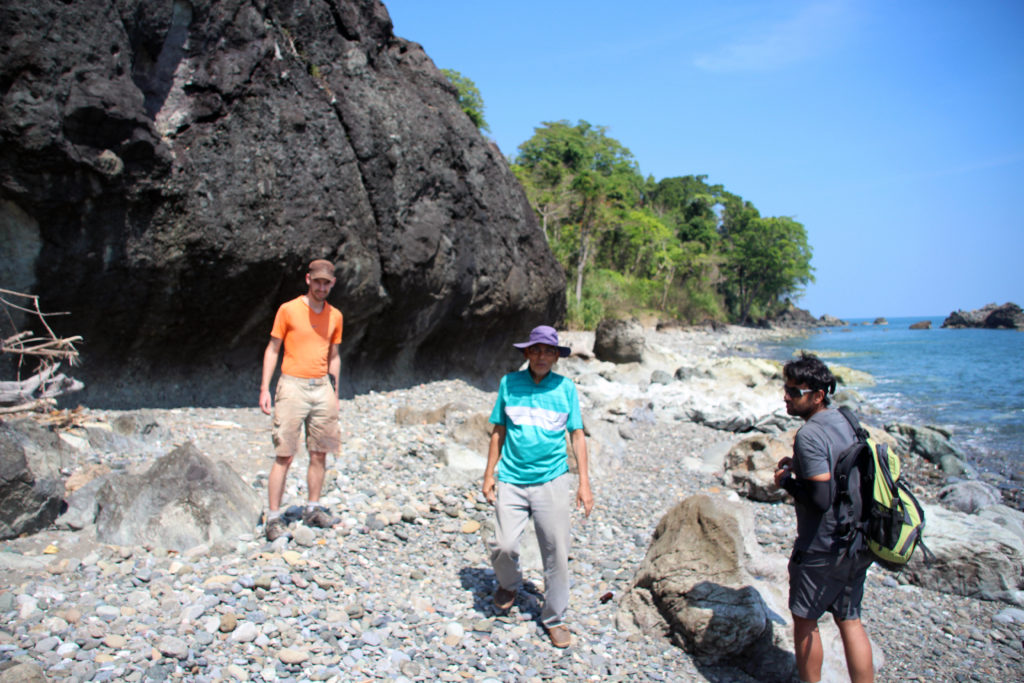
The ophiolites are overlain by a deep marine, Upper Cretaceous radiolarian cherts that intercalate with ashes interpreted to come from a nearby arc, and then, surprisingly, by shallow marine sandstones of Paleocene-Eocene age (the Namunagarh Grit formation) that reflect major uplift. After that, there was rapid subsidence again, and again deposition of middle Eocene radiolarian cherts, followed by deep-marine turbidite sequences in Oligocene to Early Miocene time that overlie (the East Andaman Flysch), and tectonically underlie the ophiolites (the West Andaman Flysch). Young uplift of the islands is reflected in limestone sequences of the middle Miocene to Pliocene. We conducted sediment provenance studies through detrital zircon analysis (for which we teamed up with our friend Alexis Licht) and sediment petrography, Pinaki’s specialty, all published in Pinaki’s paper in press in Gondwana Research. These showed that the Namunagarh Grit formation was derived 60-40 Ma ago from a proximal, active volcanic arc, and that its deposition followed a sudden phase of major uplift, followed by a phase of rapid subsidence. This is surprising because we don’t have such an arc in Sumatra. But it does exist in Myanmar and in 2019, a French team led by Jan Westerweel (including Alexis Licht) showed paleomagnetic results that place the West Burma Block, that occupies most of Myanmar, at the same latitude as, and somewhere west of the Andaman Islands. We infer in Pinaki’s paper that the West Burma Block collided with the Andaman forearc, uplifted it and shed sediments onto it, after which it migrated northward together with the Australian plate, dropping the Andaman forearc down in its wake. Part of the forearc of Andaman may have traveled with the West Burma block and is now located in eastern Myanmar where relics have been found that may correspond to the Andaman ophiolites. Anyway, that’s our two cents on it: in any case, the scenario of Jan Westerweel and colleagues opens ample opportunity to explain the hitherto enigmatic sedimentary and vertical motion history of the Andaman Islands!
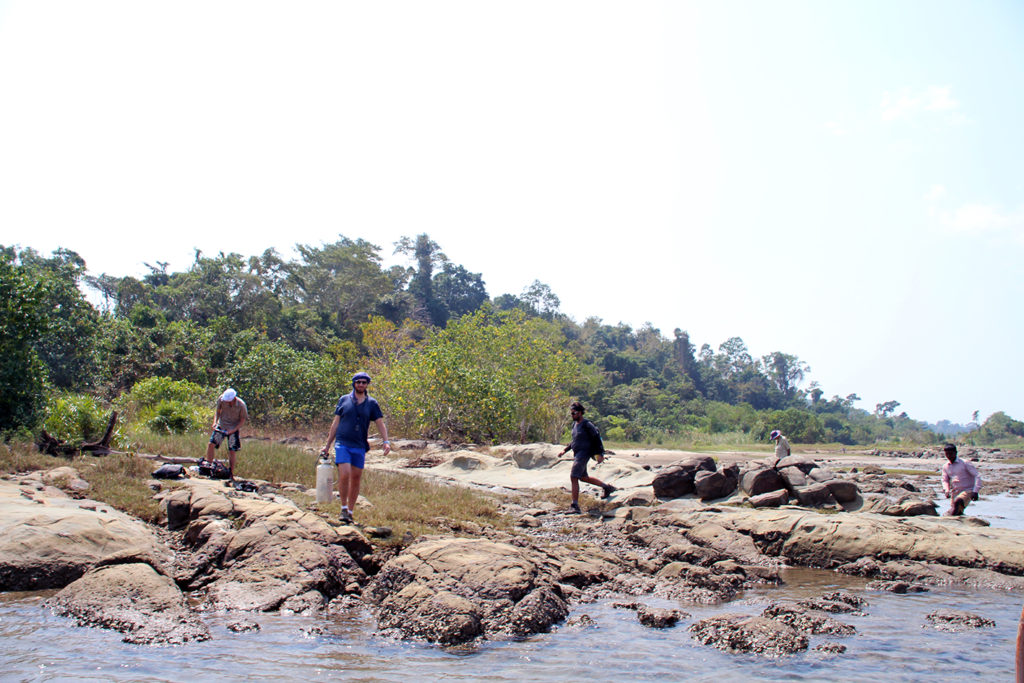
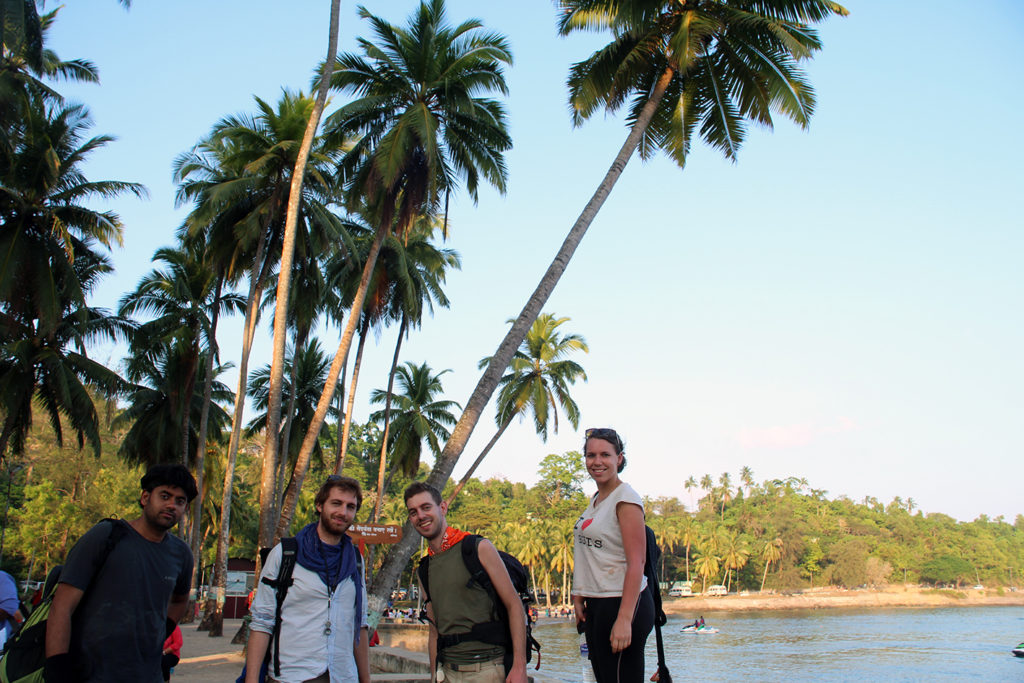

![]() This work is licensed under a Creative Commons Attribution-NonCommercial-ShareAlike 4.0 International License.
This work is licensed under a Creative Commons Attribution-NonCommercial-ShareAlike 4.0 International License.

